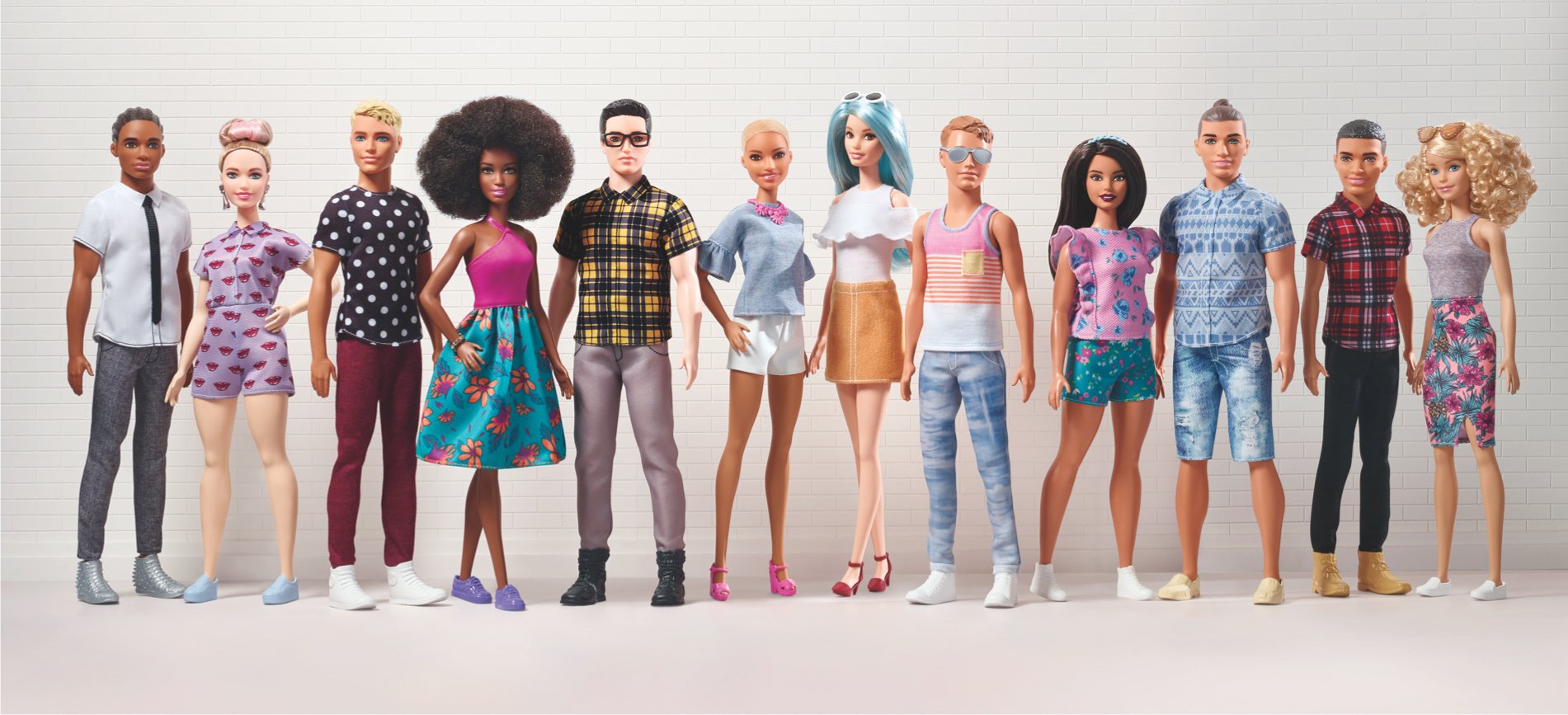Industry leading toy company Mattel, Inc. (MAT 3.07%) recently announced that Ken, the longtime on-again/off-again boyfriend of its flagship Barbie, would be getting a much-needed makeover in a move that will make the character more representative of the general population. The classic Ken doll has sported the chiseled physique and square jaw for much of his existence but has failed to resonate with a diminishing subset of the population.
Mattel revealed 15 new and diverse Ken dolls, which would feature a variety of body types, skin tones, eye colors, and hairstyles. The press release states, "The line includes 15 new Ken dolls with three body types, seven skin tones, eight hair colors, nine hairstyles and modernized fashions, ranging from casual business attire to athletic wear."
This may all seem like fun and games, but this is one of several necessary strategic moves made by the toy giant to arrest its decline after years of failing to innovate and neglecting its key brands. Making Barbie and Ken appeal to a broader, more diverse audience is key to reviving Mattel and arresting flagging sales.

Can the more diverse Barbie Fashionistas pull Mattel out of its slump? Image source: Mattel.
Ken and Barbie 2.0
Like Barbie before him, the foundation of the revamped Ken will be distinct body types, three in all -- slim, broad, and original. He will also sport a variety of hairdos including man buns and cornrows. Clothing fashions run the gamut from athletic wear to metro suburban to business casual. The most noticeable contrast for Ken is the variety of skin tones.
Barbie saw a similar makeover in 2016. Adding to her traditional buxom build, Barbie would come in curvy, petite, and tall. She would also sport seven skin tones, 14 face shapes, 22 eye colors, and 24 hairstyles. It appears these moves may be paying off. Mattel announced that sales of the Barbie Fashionistas line are seeing high double-digit growth globally, and the revamped Barbie was named "Doll of the Year" by the Toy Industry Associations at its T.O.T.Y. Awards.
Mattel reinvented
At an investor day presentation in June 2017, Mattel CEO Margo Georgiadis said: "It is time for us to reinvent this company for what today's children and families need." The first step of that metamorphoses was to slash the dividend, as the company paid out over $500 million last year while generating only $318 million in profit. This would provide the company with some time to orchestrate the turnaround. The company would also seek to reduce expenses by $150 to $200 million to fund investment for its new growth initiatives.
The company plans to create connected toys, online content, digital games, and live events that will encourage consumers to interact in new ways with old favorites like Ken and Barbie, Monster High, and Thomas the Tank Engine. Emerging markets will be another area of emphasis for Mattel. The toy industry is expected to see growth of $20 billion between now and 2021, and 62% of is estimated to be in emerging markets.
One of the largest opportunities the company sees is early childhood education in China, which is three times the size of the toy market. To that end, the company has formed a joint venture with Fosun Group and the two will look to develop play clubs that combine educational experiences with play.

Mattel's revamped more diverse Barbie wins the Doll of the Year Award. Image source: Mattel.
Turning the Titanic
Mattel's most recent financial results show just how serious the issue is for the company. In its most recent quarter revenue fell to $735.6 million, a 15% year over year decline, and its net loss increased to $113.2 million 55% worse than the prior-year quarter.
It took years for Mattel to get into the position it is in today, so it will likely take some time for the rebuilding to occur. Focusing on the company's most popular brands, engaging consumers via mobile devices, and making strong moves into emerging markets are all steps in the right direction. If the growth the company is seeing in the Fashionistas line holds up, this will be an indication that the company is on the road to recovery.






